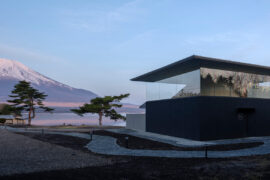
With prime views over Japan’s Mount Fuji, Yū Momoeda’s sauna facility defies typical standards to respond to the undulations of nature.

In Japan’s Kantō region, House For Family examples the potential of adaptive reuse for a young family.

Steve Leung conceived OOAK Niseko as a gift to his family. The house is an unobtrusive addition to a resort town that is becoming known for architectural innovation.

The Senior Vice President of Banyan Tree Hotels & Resorts shares about the sophisticated design of the Group’s first property in Japan and future plans in the country.

The timeless designs of Japanese architect and designer Koichi Futatsumata of CASE-REAL are led by an intuitive and holistic approach of balancing form, function and feeling.

It all starts with context and materiality for Japanese architect and designer, Keiji Ashizawa, whose work can be defined by harmonised details through an emphasis on simplicity and curated collaboration.

Okayama-based design firm Nottuo utilised the region’s abundant natural resources to create a sophisticated modern ryokan that integrates traditional Japanese architectural cues.

How can a historical building remain relevant for the next century? Architect Jun Aoki transforms a key Kyoto cultural site for contemporary relevance.

How can a historical building remain relevant for the next century? Architect Jun Aoki transforms a key Kyoto cultural site for contemporary relevance.

Housed within a 1920’s former bank, Tokyo welcomes new boutique hotel designed by Claesson Koivisto Rune inspired by “aimai” (erasing borders) featuring a series of micro-spaces including a cafe, retail and fine dining.